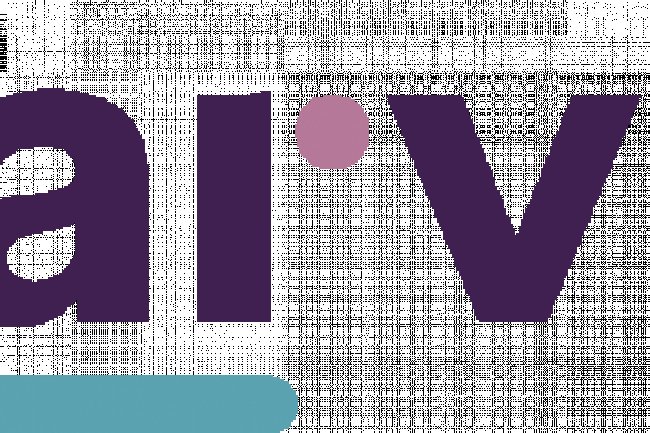Nari Shakti: From Women Development to Women-led Development by GOI
The Indian government has made it a priority to spread the idea of "Nari Shakti" throughout the country. The government is dedicated to empowering women and removing obstacles that prevent them from reaching their full potential.

Women play an essential role in society; the advancement of society as a whole would grind to a halt if it weren't for their contributions. It has been shown that societies that consistently witness rise in the number of women also find growth in their own prosperity. The only way for societies to secure their own growth is for women to gain more autonomy within those cultures.
The "Nari Shakti" movement has been given significant attention by the government of India in recent years. It is dedicated to enhancing the lives of women in the nation and removing any obstacles that stand in the way of their progression toward full potential.
According to statements made by the current Prime Minister of India, Narendra Modi, "We cannot achieve prosperity if 50 percent of our population is imprisoned at home," which refers to women. The Government of India views women's leadership in economic and social advancement as an essential component of India's overall success and a prerequisite for the nation's consolidation. Over the course of the previous eight years, the Central government has initiated a multitude of welfare programmes with the intention of empowering women and putting them in the driver's seat of India's development path.
In the past eight years, the government has introduced the following eight key programmes / schemes promoting women's empowerment:
1. A Door to Dignity: Pradhan Mantri Awas Yojana
One of the most cherished goals of each and every person is to someday have a house that they can call "home sweet home." Those on the periphery of society, both socially and economically, are not in a position to be able to afford a quality house of their own, in contrast to those who have access to more resources and can therefore make such a purchase.
Prime Minister Narendra Modi launched the Pradhan Mantri Awas Yojana – Gramin (PMAY-G) on November 20, 2016, with the goal of constructing 2.95 crore houses. This was done to address the gaps that existed in the earlier rural housing schemes and in light of the government's commitment to provide "Housing for All" by the year 2022.
As of the 29th of September in the year 2022, more than two crore homes out of a total of 2.46 crore sanctioned homes have been built. It is also encouraging to learn that women own over 69% of homes, either by themselves or in partnerships with other women.
The government of India is dedicated to improving the quality of life for women so that they can do so with more dignity. It has satisfied the ambitions of women to own a pucca house and improved their participation in the financial decision-making process of the household by granting ownership of dwellings under PMAY-G. In addition, the women who live in pucca houses are afforded more safety, dignity, and economic power, all of which contribute to an improvement in their level of social inclusion.
2. Ensuring Smoke-Free Homes: Pradhan Mantri Ujjwala Yojana
Due to the usage of traditional biomass fuels like firewood, dried cow dung, and other animal products, the act of cooking, which is done on a daily basis by millions of women in India, especially in rural areas, poses a significant risk to their health.
manure, etc., as cooking fuels and the resultant pollution of the indoor air that results from this practise. Up until 2014, over 10 crore households in India did not have access to the cleaner fuel LPG and instead relied on older fuels.
Prime Minister Narendra Modi initiated the Pradhan Mantri Ujjwala Yojana (PMUY) in May of 2016, with the goal of protecting the health of women and children and providing them with clean fuel for cooking. Households in rural areas and those living in poverty will have easier access to clean cooking fuels like LPG if this initiative is successful.
Because of the Ujjwala Yojana, more than 9.4 crore new LPG connections have been made available across the country, which has significantly increased the amount of households that have access to the fuel source. The International Energy Agency (IEA), which is one of the world's most influential organisations in the energy sector, has hailed the programme as a significant step forward in enhancing both the natural environment and the health of women.
PMUY has been successful in bridging the gender gap in terms of rights, access, and economic empowerment because of its focus on empowering women.
3. Protecting Women’s Dignity: Swachh Bharat Mission
Sanitation is one of the most fundamental need for human existence. In spite of the fact that it is generally acknowledged that sanitation and personal hygiene are of the utmost significance, the sanitation coverage in India was as low as 39% till 2014. People living in rural areas were suffering serious blows to their health and dignity as a result of this, particularly women and children.
Prime Minister Narendra Modi launched the Swachh Bharat Mission (SBM) on October 2, 2014, with the goal of supplying toilets to every household in the country over the course of a period of five years. This was done after the Prime Minister became aware of the difficulties that were being experienced by women and children as a result of a lack of toilets. From the ramparts of the Red Fort on August 15, 2014, the Prime Minister of India called on the people of the country to join the Swachh Bharat Mission and pay their respects to Mahatma Gandhi on his 150th birth anniversary by devoting a Swachh Bharat to him. This was done in honour of the fact that it was Gandhi's 150th birthday.
Approximately 11.5 billion toilets were built across the nation as part of the SBM-Gramin programme. Over 70 lakh home, community, and public toilets have been constructed as part of the SBM-Urban programme. It was possible to attain nearly one hundred percent rural sanitation coverage because of the availability of sanitary facilities for every family and the consistent utilisation of these facilities.
When they had to take care of their sanitary needs in the open, women and girls often experienced feelings of helplessness and anxiety, and at times even shame. This was before toilets were erected. They would consciously reduce the amount of water and other liquids they consumed in an effort to suppress the urge to urinate. This would lead to issues that are related to one's health. In addition, women and girls were put in harm's way when they were forced to defecate in public since they were frequently subjected to verbal and physical harassment from men as well as attacks by animals.
According to a report titled "Access to toilets and the safety, convenience, and self-respect of women in rural India," after the construction of toilets, 93% of women reported that they were no longer afraid of being hurt by someone or harmed by animals while defecating; 93% of women reported that they are no longer afraid of contracting health infections; 92% of women said that they were no longer afraid of going to the toilet in the dark of night, which is a significant improvement from the pre
Without a shadow of a question, one of the most significant groups of people to gain from this initiative has been the female population. By fostering a culture of cleanliness and hygiene and putting an end to public urination and defecation, SBM has made an incalculable contribution to the enhancement of the standard of living enjoyed by women in both rural and urban settings.
4. Drinking Water at the Door-Step: Jal Jeevan Mission
Water is essential to all forms of life. Without water, all human endeavours are rendered impossible. A community's access to potable water is, as a result, one of the most important factors in determining its overall health and prosperity. The Jal Jeevan Mission (JJM) was initiated on the 15th of August, 2019, by the current Prime Minister of India, Narendra Modi. The primary goal of the Jal Jeevan Mission (JJM) is to improve the lives of people, particularly those of women and children, by providing a supply of clean water from the tap to every rural household and public institution in villages by the year 2024.
Since the country's independence in 1947 till the month of August 2019, only 3.23 crore out of a total of 19.14 crore rural households had a connection to the public water supply. As a result, the vast majority of rural houses, which accounted for 83% of all homes, lacked any kind of functional link to the public water supply. Under the JJM programme, almost seven crore rural homes have been provided with connections to the public water supply in a span of only thirty-seven months. In addition, three states, Goa, Telangana, and Haryana, as well as three union territories, A&N Islands, D&N Haveli & Daman & Diu, and Puducherry, have been designated as "Har Ghar Jal."
Families, and particularly women and young girls, who do not have access to potable drinking water at home are compelled to spend a significant amount of time and effort every day travelling great distances in order to collect water supplies for their households. Jal Jeevan Mission is making concerted efforts to free women from the age-old drudgery of fetching water from a distance while carrying heavy loads and to make the villages WASH (Water, Sanitation, and Hygiene) enlightened villages. These efforts are being made in an effort to free women from the age-old drudgery of fetching water from a distance.
The Justice and Peace Mission (JJM) is making a significant contribution to the empowerment of women by including women in its planning, decision-making, implementation, and monitoring processes.
5. Empowering Women Entrepreneurs: Stand-Up India and PM MUDRA Yojana
When presented with the right opportunities, the women in our country are capable of accomplishing anything. Women in India are seeing enormous increases in their hopes, goals, and expectations due to India's rapid economic development. They want to go from being people who look for jobs to people who really create jobs for other people.
Pradhan Mantri MUDRA Yojana (PMMY) and Stand-Up India are two major initiatives that have been launched by the government of India as a result of the government's recognition of the potential for new female entrepreneurs to stimulate economic growth and the need to remove any barriers that may prevent them from obtaining institutional credit.
The mission of Stand-Up India is to encourage women, members of the Scheduled Castes (SC), and members of the Scheduled Tribes (ST) to become entrepreneurs and to provide assistance to them in launching greenfield businesses. Since the beginning of the Stand-Up India scheme, a total of 30160 crores of rupees has been allotted to 133,995 accounts (as on 21.03.2022).
PMMY was established with the intention of extending loans of up to ten million rupees to non-corporate, non-agricultural small and micro firms. Since the beginning of the PMMY programme, more than 34.42 crore loans totaling Rs 18.60 lakh crores have been approved as of March 25, 2022. This represents a significant increase from the beginning of the programme.
The contribution that women make to the development process of New India is always growing and expanding. Both of these programmes have encouraged entrepreneurship at the grassroots level with an emphasis on economic empowerment and the development of jobs. These two programmes have been of great assistance to women in particular, who have reaped many of the benefits. More than 68 percent of the loans that were made available through the PMMY were given to women business owners, and 81 percent of the people who benefited from Stand-Up India were female.
6. Giving Wings to Girl Child: Beti Bachao Beti Padhao
Since 1961, there has not been a reversal in the downward trend of the Child Sex Ratio (CSR), which can be defined as the number of girls per 1000 boys between the ages of 0 and 6 years old. It is concerning that the number of deaths fell from 945 in 1991 to 927 in 2001 and then further to 918 in 2011. The reduction in corporate social responsibility is a fundamental signal of the disempowerment of women. It is a reflection of both prejudice against girls before birth, which is reflected through gender-biased sex selection, and discrimination against girls after birth.
In light of this, on January 22, 2015, in celebration of the Girl Child, Prime Minister Narendra Modi launched the Beti Bachao Beti Padhao (BBBP) scheme in an effort to inspire a mental and emotional shift in the people of our nation and to ensure the survival, protection, and education of the girl child. This was done in an effort to foster a change in the minds and hearts of the people of our country.
The BBBP plan has led to an improvement in a number of different indices as a direct consequence of the persistent efforts of the government. Enrollment of Girls in secondary education has increased from 75.51% in 2014-15 to 79.46% in 2020-21; Gross Enrollment in higher education increased by 18% from 2015 to 2020; Percentage of Institutional Deliveries has also shown an improvement from 87% in 2014-15 to 94.8% in 2020-21; and percentage of 1st Trimester Antenatal Care (ANC) Registration has increased. Sex Ratio at Birth at the National level has improved by 19 points, moving from 918 ( In addition, the Sex Ratio of the Country's Total Population has hit 1020 females for every 1000 males for the very first time in the history of the nation (NFHS-5, 2019-21).
Today, the concept of appreciating the girl child has been ingrained into the national psyche thanks to BBBP. The programme is not only attempting to address the prejudicial treatment meted out to the girl child before birth by valuing the contribution that women make to society; rather, it is attempting to address the unjust access to resources and care that she faces even after birth. This is done by recognising the importance of women's roles in society.
7. Fighting Malnutrition: POSHAN Abhiyaan
Undernutrition (also known as wasting, stunting, or underweight), an insufficient amount of vitamins or minerals, being overweight or obese, and the diet-related non-communicable diseases that can follow from these conditions are all kinds of malnutrition (WHO). Undernourishment is a contributing factor in about half of all deaths that occur in children younger than five years old (UNICEF).
The problem of malnutrition has been given a high priority by the government of India, and the country's response to the problem is to take a comprehensive approach. The goal of the POSHAN (Prime Minister's Overarching Scheme for Holistic Nutrition) Abhiyaan, which was initiated by the Prime Minister and aims to improve nutritional outcomes for children under the age of six, pregnant women, and lactating mothers in a time-bound manner, is to combat the problem of malnutrition.
A powerful ICT-enabled platform known as POSHAN Tracker has just been made available with the goal of ensuring real-time monitoring of the provision of supplementary nutrition as well as real-time information for rapid supervision and administration of services. Up to this point, more than 12 lakh Anganwadis have submitted data, addressing the needs of around 11 crore beneficiaries.
Nutritional indicators for children younger than five years old have made tremendous progress as a direct result of the persistent efforts of the government. According to the NFHS-5 (2019-21), the prevalence of stunting has decreased from 38.4% to 35.5%, the prevalence of wasted has decreased from 21.0% to 19.3%, and the prevalence of underweight has decreased from 35.8% to 32.1%. In addition, the proportion of women aged 15 to 49 years old whose body mass index (BMI) is below the normal range has decreased from 22.9 percent in the NFHS-4 survey to 18.7 percent in the NFHS-5 survey.
8. Providing Security to Muslim Women: Abolishment of Triple Talaq
Talaq-e-Biddat, also known as Triple Talaq, is a method of divorce that was traditionally used in Islam. Under this method, a Muslim man might divorce his wife simply by uttering the word "talaq" three times in quick succession. It is not necessary for the man to provide a justification for the divorce, nor is it necessary for the woman to be present when the talaq is pronounced. Muslim women have long advocated for an end to the oppressive and abusive practise of triple talaq, also known as three strikes.
In a judgement that was handed down by a five-to-four majority on August 22, 2017, the Supreme Court ruled that the practise of instant Triple Talaq violates Article 14 of the Constitution. Even after the Supreme Court issued its judgement and declared this practise to be in violation of the Constitution, the practise of Triple Talaq was still widely used.
The Muslim Women (Protection of Rights on Marriage) Act, 2019 went into effect shortly after it was approved by both chambers of the United Kingdom's Parliament. The Act proclaimed the practise of granting an instant divorce by pronouncing the word "talaq" three times to be invalid and unlawful. It stipulates that the spouse who practises instant Triple Talaq is liable for a fine and imprisonment for a term of up to three years, whichever is greater.
Muslim women, who had been subjected to this backwards practise for the better part of the last few decades, were finally granted legal protection thanks to the passage of the Triple Talaq law. This historic reform led to an improvement in the pre-existing situations of Muslim women and assisted them in escaping the domestic abuse and social prejudice they had been subjected to up to that point.
What's Your Reaction?




















